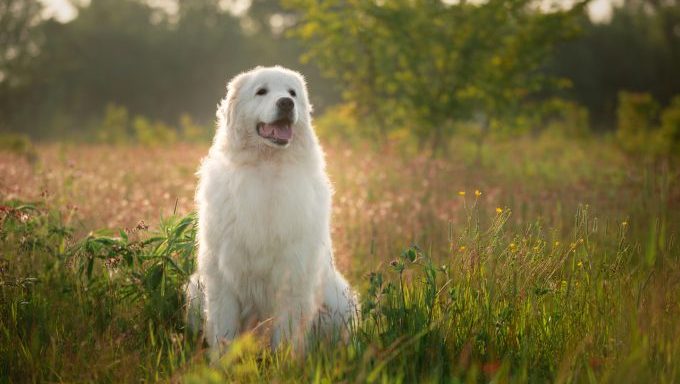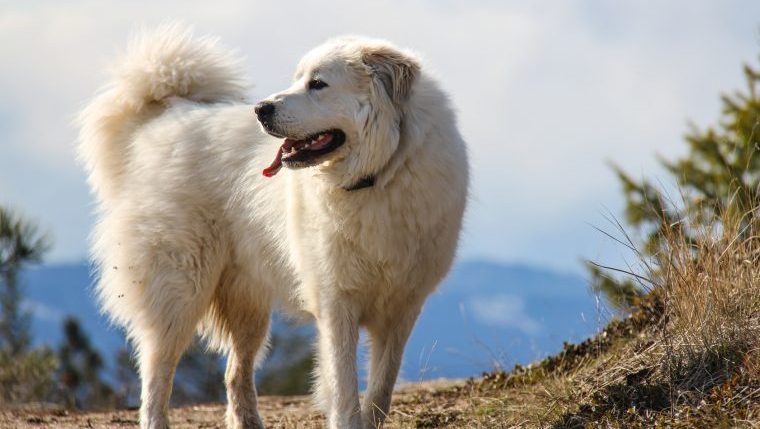
Livestock guardian dogs (LGDs) have wagged their way into recent popularity. For hundreds of years, their instincts established this type of dog as an important protector of livestock. Loyal, independent, and calm, LGDs can also make great companions in households. However, there may be one massive deterrent to adopting a livestock guardian dog: barking.
We’re not just talking about yapping or the occasional woof-woof. We’re talking resounding hollers. Because barking is the principal manner in which livestock guardian dogs alert handlers to potential threats, a falling leaf, a rustling squirrel, or a passing car can all register as potential threats. These protective pups are known to bark often, especially in the Great Pyrenees. Fortunately, time and training can offer some remedy. Read on for more tips and tricks!
Tips to train livestock guardian dogs to stop barking
While highly intelligent, livestock guardians have garnered a reputation for being difficult to train. Because LGDs were bred to spend a great amount of time away from their handlers on farmsteads while guarding flocks and herds, their natural independence can also mean a certain amount of stubbornness. These dogs were bred to think for themselves. As a result, they may not always listen to commands even though they understand them. Still, LGDs are very capable of responding to training if they have a trusted relationship with their owner. Positive reinforcement and a willingness to have fun with your pup in the process are key!
Acknowledge the reason for barking
Barking often comes from fear, boredom, or the need for attention. With the LGD, however, there could be other reasons for the behavior. This type of dog is very responsive to sound. It is incredibly important to acknowledge the reason for barking. If your livestock guardian dog feels that they are doing their natural job, they are more likely to relax if they feel confident they have alerted you to a threat. Yes, even if that threat is a delivery driver.
Livestock guardian dogs may not stop barking until they understand you have seen the reason for the alert. As their partner, your job is to respond to the threat and assess its level of danger. For example, you can look out the window at the delivery driver, then return to your dog and let them know you saw the threat and decided it is ultimately not a problem. Reassured, your livestock guardian can return to a couch snooze or favorite chew toy.
Bark and quiet commands for livestock guardian dogs
While it may seem antithetical to getting your LGD to stop barking, training your dog to bark on command is an important step in teaching your dog to stop barking. If your pup understands the prompt to “speak,” they can also understand what it means to be quiet.
After you teach your dog to speak, you can begin training your dog to be quiet. Always reward your pup when they respond to your commands. Follow the same type of positive reinforcement when training your dog to respond to the “quiet” or “hush” command.
Desensitization training
Desensitization training can be used for excessive barking. According to the VCA, desensitization training is a method of repeatedly introducing a pet to a stimulus that would ordinarily cause an unwanted reaction. With time and patience, this type of training allows your dog to become familiar with sounds and may help them discern common occurrences from real threats.
The process is simple but takes time. Have a friend gently knock on your front door. Hearing the potential danger, your LGD will respond. Similar to other training methods, you will follow the distraction, command, and reward progression. When your pup has quieted, you will reintroduce the knock. You will again distract, command your pup to quiet, and reward the behavior. Eventually, you will increase the stimulus. Your friend may knock multiple times or increase the sound. After practice, your pup may begin to understand that the stimulus is not a threat and will no longer need to constantly bark at the sound of a knock or a passing car.
Practice makes perfect
As always, practice and patience are necessary for success. Because of livestock guardian dogs’ independence, it is important to find the highest value reward during training sessions.
Check out our other training tips and ways to deal with a barky dog.







